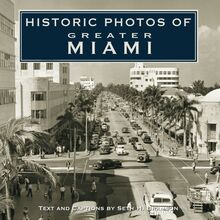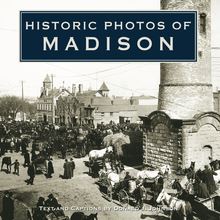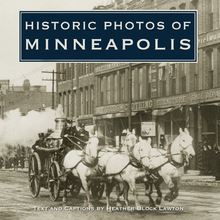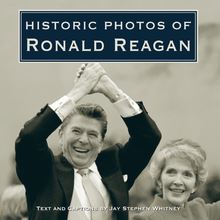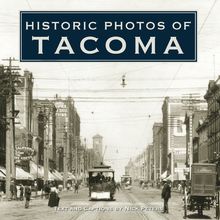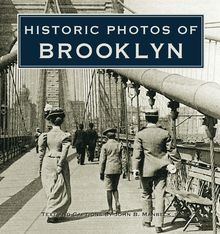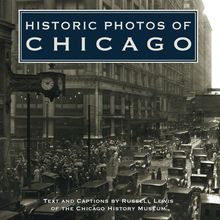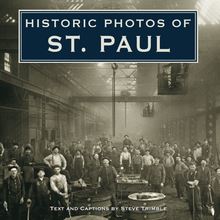Historic Photos of Ernest Hemingway , livre ebook
203
pages
English
Ebooks
2009
Vous pourrez modifier la taille du texte de cet ouvrage
Obtenez un accès à la bibliothèque pour le consulter en ligne En savoir plus
Découvre YouScribe en t'inscrivant gratuitement
Découvre YouScribe en t'inscrivant gratuitement
203
pages
English
Ebooks
2009
Vous pourrez modifier la taille du texte de cet ouvrage
Obtenez un accès à la bibliothèque pour le consulter en ligne En savoir plus
Publié par
Date de parution
01 mars 2009
Nombre de lectures
1
EAN13
9781618583932
Langue
English
Poids de l'ouvrage
3 Mo
When Ernest Hemingway won the 1954 Nobel Prize for Literature, presenters called him "one of this epoch’s great molders of style,” praising his vivid dialogue and journalistic eye for "robust details to accumulate and take on momentous significance.”
But even the Swedish Academy could not separate Hemingway the writer from Hemingway the adventurer. They also cited his "manly love of danger and adventure, with a natural admiration for every individual who fights the good fight in a world of reality overshadowed by violence and death.”
From the 1920s until his death in 1961, "Papa” Hemingway was a larger-than-life literary figure whose everyday exploits became legendary. He was a friend of celebrities, a war correspondent, journalist, renowned big-game hunter, record-setting saltwater angler, and hard-drinking brawler whose reputation preceded him.
Though Hemingway was and remains an American icon, he was also first and foremost a human being, as these striking black-and-white photos remind.
Publié par
Date de parution
01 mars 2009
Nombre de lectures
1
EAN13
9781618583932
Langue
English
Poids de l'ouvrage
3 Mo
Turner Publishing Company 200 4th Avenue North • Suite 950 Nashville, Tennessee 37219 (615) 255-2665
www.turnerpublishing.com
Historic Photos of Ernest Hemingway
Copyright © 2009 Turner Publishing Company
All rights reserved.
This book or any part thereof may not be reproduced or transmitted in any form or by any means, electronic or mechanical, including photocopying, recording, or by any information storage and retrieval system, without permission in writing from the publisher.
Library of Congress Control Number: 2008938802
9781618583932
Printed in the United States of America
09 10 11 12 13 14 15 16—0 9 8 7 6 5 4 3 2 1
Table of Contents
Title Page Copyright Page ACKNOWLEDGMENTS PREFACE FROM OAK PARK TO PARIS - (1899–1925) WRITING AND OTHER ADVENTURES - (1926–1938) ONE HUNDRED PERCENT PAPA - (1939–1951) LIFE TAKES ITS TOLL - (1952–1961) NOTES ON THE PHOTOGRAPHS
When Hemingway posed for this photo on one of his first trips to the fishing village of Cojímar, there was no way he could have known he would become a Cuban national hero—or that after his death, the fishermen of Cojímar would donate their propellers and other bronze from their boats to build a bust of Hemingway that would rest in a place of honor not far from where he sits now.
ACKNOWLEDGMENTS
This volume, Historic Photos of Ernest Hemingway, is the result of the cooperation and efforts of many individuals, organizations, and corporations. It is with great thanks that we acknowledge the valuable contribution of the following for their generous support:
John F. Kennedy Presidential Library and Museum Landov Media Oak Park and River Forest High School Princeton University Library
The author would also like to thank Laurie Austin, Jessica Caum, Steven Cox, Valerie Hemingway, Gunnel Leavens, Forrest MacMullen, Michael McCalip, Bill Smallwood, René Villarreal, and Don Vogel of Oak Park and River Forest High School for their assistance.
to Michael Whalton and Lorian Hemingway, for the Hemingway Days that turned into years
PREFACE
Like Mark Twain before him, Ernest Hemingway became the most celebrated writer of his time. After cameras found the nineteen-year-old in Milan, where he was lauded as the first American wounded on the Italian front during World War I, and after The Sun Also Rises became known as the quintessential novel of the Lost Generation, he remained in the public eye for most of his life. Everything Hemingway did was news, whether it was writing another article or book, hunting in Africa and the American West, big-game fishing in the Gulf Stream, skiing with socialites and movie stars, covering four different wars as a correspondent, following bullfighters on the summer circuit, or just traveling with one of his four wives (or rumored mistresses). He was a creative genius, certainly, but he was also a public figure and the embodiment of American robustness and vigor—a two-fisted drinker, brawler, and adventurer the world came to know as “Papa.”
Hemingway, like Twain, did not shrink from publicity. He reveled in it, as attested by more than 10,000 photographs in the Ernest Hemingway archive at the John F. Kennedy Library and another 2,000 at the Museo Ernest Hemingway in Cuba that are not as yet public. Hemingway usually gave photographers what they wanted, allowing them to document his every move and every mood, and he frequently signed photos for friends and admirers, as they did for him. Often the photographers were friends and admirers. But he was so conscious of his image that he sometimes wanted to approve photos that appeared in magazines, and he was an enigma to even his closest pals: a mixture of truth and lies, of put-downs and put-ons, of understatements and exaggerations. One minute he needed people around him, and the next he required solitude. At times he could be extremely generous or tolerant, at other times he was quick-tempered and vindictive. He could be bombastic and blustery, or soft-spoken and congenial. The only constants were his desire to write “one true sentence” and a spirit of adventure that was patterned after his boyhood hero, Teddy Roosevelt, which led him to live in scenic places like Key West, Cuba, and Idaho and to test his mettle almost constantly.
Hemingway’s Papa persona was a ruggedly romantic figure that dispelled the image of a mild-mannered, solitary writer whose only world was words. Though some, like writer Max Eastman, would accuse him of having “false hair” on his chest, and though a feminist backlash would later come, the public was fascinated by Hemingway’s macho personality and adventurous life-style because it meshed well with the ideal man projected on the big screen by actors like John Wayne, Clark Gable, and Humphrey Bogart. But if his man’s man persona was timely, his writing was way ahead of its time. Hemingway’s prose style was so distinctive that Transatlantic Review editor Ford Madox Ford declared after reading only six of his sentences that he would publish anything the young author would ever write. Just as he was a life force, Hemingway quickly became a literary force whose stripped-down prose was imitated on college campuses and writers’ garrets all across the country. He shunned adjectives and strived for objective writing that could capture the actual feel of a thing rather than simply describing it, and he created dialogue that was unmistakably stylized. Like modernist artists who railed against the notion that art must be beautiful, Hemingway frequently turned to society’s down-and-outs for his characters. His themes caused critics like Philip Young to take note of a Hemingway hero who lived by a code and the young aspirant who tried to learn that code. Quickly, Hemingway’s novels and such short stories as “Hills Like White Elephants” and “The Short Happy Life of Francis Macomber” became staples in high school and college classrooms.
Acclaim came early in his career, while awards came late. Critics praised The Sun Also Rises (1926) and A Farewell to Arms (1929), but For Whom the Bell Tolls (1940) was a blockbuster best-seller that prompted mixed reviews. Then came a literary drought that had critics claiming Hemingway the writer was down for the count. It wasn’t until he bounced back with The Old Man and the Sea (1952) that Hemingway received his first major literary award—a Pulitzer Prize. The Nobel Prize in Literature followed, honoring him for a body of work that included seven novels published during his lifetime, six collections of short stories, and four works of nonfiction.
Since his death in 1961, Hemingway has remained a literary force. No fewer than six books of his writings have been published posthumously, and he remains as famous today as when he appeared on the covers of Time, Look, and Life magazines. There are busts and monuments to him in Italy, Spain, Idaho, Cuba, Paris, Key West, and practically every place Hemingway spent any length of time. More literary criticism devoted to Hemingway and his work is published every year than is devoted to any other American author, and festivals celebrating his life and life-style continue to thrive. His face, commemorated on United States—and Cuban, Czechoslovakian, and Central African—postage stamps, remains one of the most recognizable, and although Time named him one of the century’s most influential people and Hemingway consciously played the role of Papa, what mattered to him most was the company of ordinary people, as many of these photos illustrate. Hemingway granted photographers far more access than reporters, whom he mistrusted and often misled. But it’s hard to lie to a camera.
—James Plath
Ernest Miller Hemingway was named for his maternal grandfather and uncle. He weighed 9.5 pounds and measured 23 inches at birth, with blue eyes and dark hair. Of this earliest photo taken professionally when he was four weeks old, his mother said he looks “sweetly satisfied”—perhaps because her second child and first son was breast-fed on demand and, she implied, he could be quite demanding.
FROM OAK PARK TO PARIS
(1899–1925)
Ernest Miller Hemingway came into this world on July 21, 1899, the second of six children born to a respected doctor and a society matron who had trained to become an opera singer. Both parents worked out of their home in Oak Park, Illinois, with Dr. Clarence “Ed” Hemingway practicing medicine and Grace Hall Hemingway giving music lessons. Ernest’s siblings were Marcelline (1898), Ursula (1902), Madelaine or “Sunny” (1904), Carol (1911), and Leicester (1915). By all accounts, their family life was a normal one. Like others of their social standing, the Hemingways had two live-in servants, one of whom was assigned to help with the children.
Ernest attended Oak Park and River Forest High School but felt that college wasn’t as useful as life experiences, especially for what he wanted to become: a writer. Partly that proved true, but Hemingway also had excellent instruction every step of the way. His father was his first great teacher. An accomplished woodsman and naturalist, Ed Hemingway taught Ernest everything he knew about the outdoors and inculcated in him a love of nature, hunting, and fishing. In high school, Ernest’s talent was discovered and nurtured by two English teachers, Fannie Biggs and Margaret Dixon. And when he joined the staff of the Kansas City Star fresh out of high school, Ernest had the good fortune of being able to observe a legendary newsman named Lionel Moise, who was the highest paid reporter everywhere he worked, for good reason.
Later, when Ernest was trying to break into print and patterning his fiction after stories he saw in popular magazines like Red Book, Vanity Fair, and Argosy, he found another mentor in Sherwood Anderson, a writer he met in Chicago. Anderson told Ernest that slick fiction was “a perversion of life” and that modernism was the wave of the future. He helped Hemingway discover literary magaz





